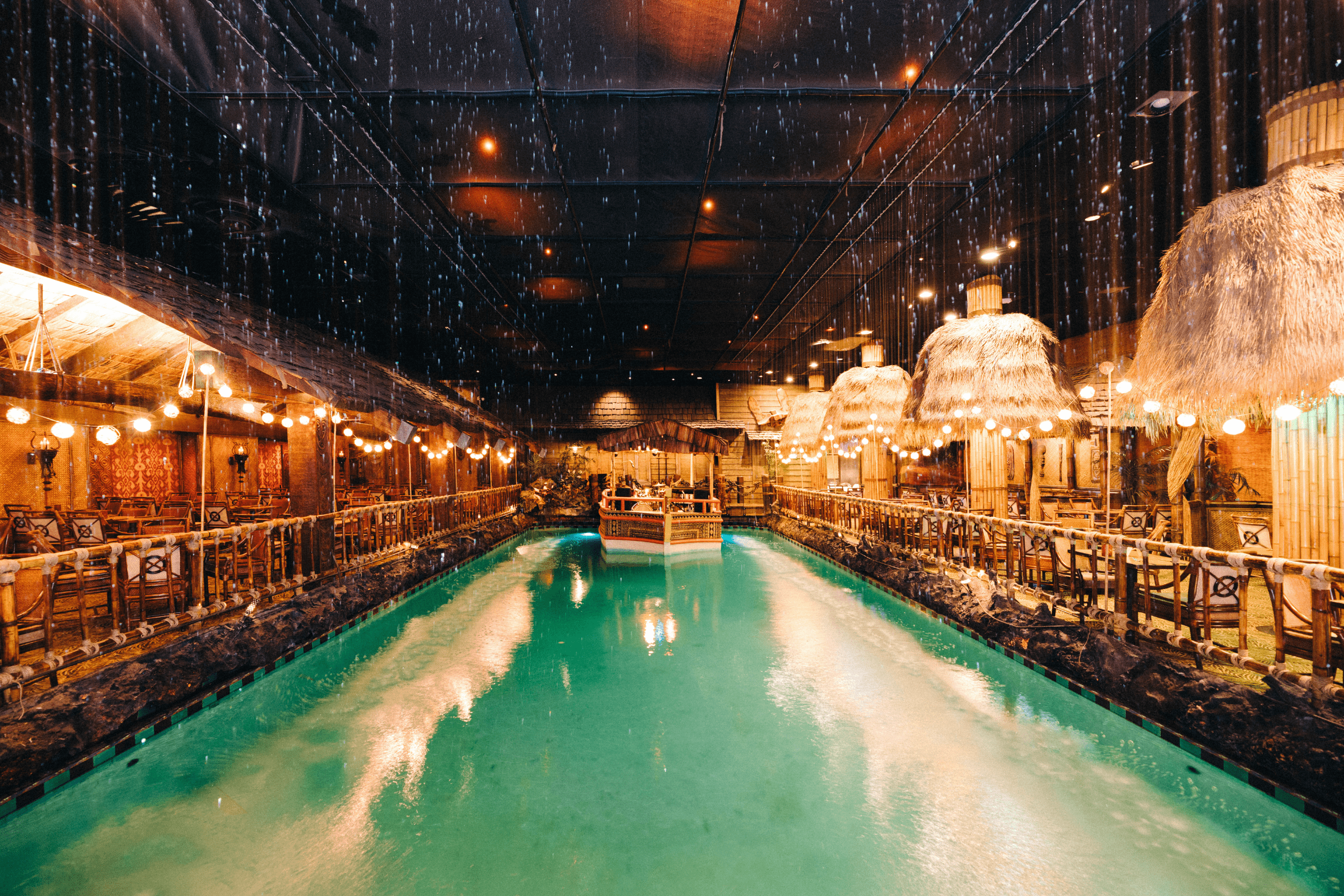At BLACKOUT in Las Vegas, diners are blind to everything but the taste of their food. After locking up their phones and other personal effects, customers select a savory, spicy or sweet flavor profile from a mystery menu. A waiter wearing night goggles then escorts them into the pitch-black dining room, where they’ll enjoy a 90-minute, six-course meal they can’t see at all. Spoons clink, Champagne pops, and — if husband-and-wife owners Avraham Levi and Rachel Roberts-Levi have their way — taste buds are titillated like never before.
This may seem like a wild concept, but it’s part of a growing trend. “Consumers have emerged from the pandemic with a heightened demand for entertainment, spectacles and sensational experiences,” says Datassential trend forecaster Huy Do. And who can blame us? After years of living behind screens, who wouldn’t want to press pause on our phone and, say, sip a margarita in a cave full of stalactites, à la New York City’s La Caverna? And if your plate of seared scallops can be floated to you on a table-turned-river like at New Jersey’s Stone House, why settle for standard service? From sensory-rich meals served in complete darkness to 50-course tasting menus delivered with virtual reality hijinks, a new wave of immersive, multi-sensorial experiences is redefining the art of fine dining.
So what’s driving this craze? Gen Zers’ interest in the experiential, experts say. “Younger consumers use restaurants to reward themselves,” says Mintel food-service analyst Varchasvi Singh. “High-end experiential dining satisfies not only their need for novel, exciting experiences, but also their general curiosity about unique flavors, cuisines and their origins.” Add to that the fact that 70% of consumers are interested in multi-course meals and tasting menus, with nearly 60% saying they’re willing to pay more for these kinds of experiences, per a recent Datassential report, and you’ve got a full-blown fad.
Plus there’s science to back it up. The brain is intimately involved in our appreciation of food, according to late Yale neuroscientist Gordon Shepherd. Everything from plate color to background sounds impacts how we process taste. Lower pitched music, for example, can emphasize bitter flavors. Even chair softness has an effect. That’s why Eatrenalin in Germany combines an eight-course dinner with comfy floating chairs. Flavor is more potent when all our senses are triggered.
Presentation also influences how we perceive food. A recent Ohio State study found that people enjoyed eating popcorn more with chopsticks than by hand and preferred the taste of water when sipping it out of an envelope or lapping it up like an animal (seriously). Concept restaurants lean into this, like the tiki-themed Tonga Room at Fairmont San Francisco, where you can dine alongside an indoor lagoon.
Lighting has a role, too. Rouge Room in Las Vegas plays into the “darkroom-core” aesthetic to influence how patrons feel upon entering the Parisian-themed eatery. A nocturnal atmosphere can trigger a visceral reaction, says color consultant Jennifer Guerin. “Red light is thought to stimulate hunger,” she notes. “It also evokes notions of sexiness and danger, so it can create a sense of intimacy.”
And even virtual reality can influence our perceptions. A Cornell University study found that participants thought cheese tasted more pungent when savored in a (virtual) cow barn as compared to other settings.
As artificial intelligence, augmented reality, robotics and similar innovations continue to shape the culinary world in ever more inventive ways, experiential dining will no doubt give all of us lots of food for thought.
Explore our guide to the top experiential dining hot spots around the world.






